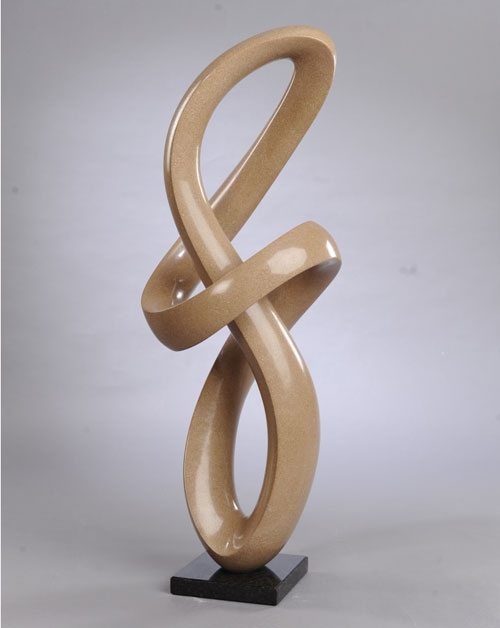Jason Quigno, who specializes in large and small scale stone sculptures, prefers a lasting approach to art.
“Part of my mission as an Anishinaabe artist is to tell the stories of my people through stone – to keep them alive, so several thousands of years from now the stories of the Anishinaabe people will still be here in stone,” said Quigno, a Grand Rapids-based artist.
His sculptural work ranges from granite, marble and limestone basalt to alabaster and soapstone. Quigno’s body of work is largely based on the preservation of Anishinaabe culture and its seven grandfather teachings: love, respect, honesty, bravery, truth, humility and wisdom. “These teachings are ancient and are still relevant today within the Anishinaabe communities,” he said.
His vision tells the stories of the Anishinaabe people in a modern context, with abstracted works, contrasting to the traditional Anishinaabe depictions of animals and people. Quigno said each of his scrupulous pieces start with a simple sketch. “My creative process starts with a thought or idea, then a drawing, and then I go find the right stone that can fit with that idea.”
Along with his culture, run-of-the-mill experiences also provide stimulus for his stone sculptures. “Things I see in my daily life give me ideas,” he said. “Whether it’s a pattern I see in nature or even music I hear. But mostly it’s just the work itself, the action of taking a raw block of unyielding stone and carving it into something beautiful, beautiful in my eyes anyway.”
The connection with nature is evident in his work. With the earthy stone mediums and forms that echo the rhythms of nature, his carvings are so meticulous and simple they could be straight from the earth itself. “One time I saw a little stone through a crack in my porch,” he recalled. “In that glance I saw an owl landing on another stone with its wings out. I was so inspired by the vision that I carved it all out, working 30 hours straight.”
Although the simplicity and elegance depict an effortless process, his work entails a substantial amount of detailed outlining in the preliminary stages before his hands get dirty. “There is a lot of planning and thinking before I even touch the stone. Sometimes the stone itself dictates what it’s going to be.”
Sometimes unforeseen mishaps dictate the direction of a sculpture. “I was working on a big sculpture and had spent many hours on it,” Quigno recalled. “As I was finishing I laid it down and it broke right in half. At first I was discouraged, but then I saw a whole different avenue to take my work. It turned out to be a good thing.”
All of Quigno’s hard work paid off two years ago, when he scored a prestigious solo show. “One of my proudest achievements to date was back in 2014,” he said. “I had a one-man exhibit at the Muskegon Museum of Art.” For those who missed it, the museum currently has his work in their permanent collection.
Currently, he’s showing at the LaFontsee Galleries in Grand Rapids and Douglas, finishing multiple monumental works under commission. His limestone piece, “People of the 3 Fires,” is his 2015 ArtPrize entry.
And while he’s an Alma, Mich. native and member of the Saginaw Chippewa Indian Tribe in Mt. Pleasant, Quigno is happily submerged in the West Michigan art scene. “I enjoy the art community in the area,” he said. “The best part is my studio, which is an old boiler room. It’s inspiring being there. The building where my studio is in has a thriving art community and the energy there is good for the creativity.”





